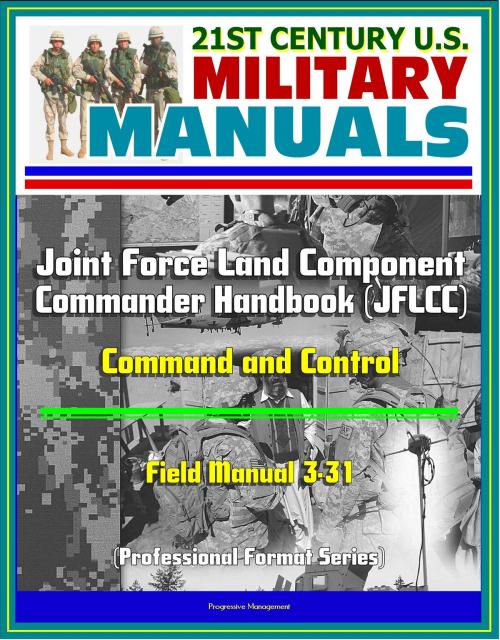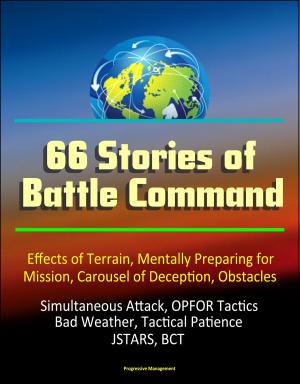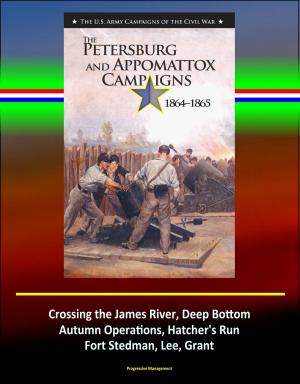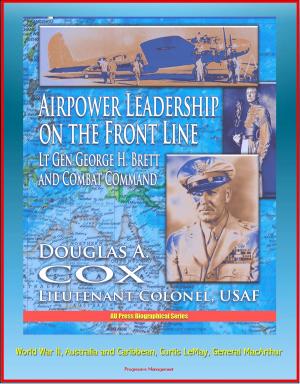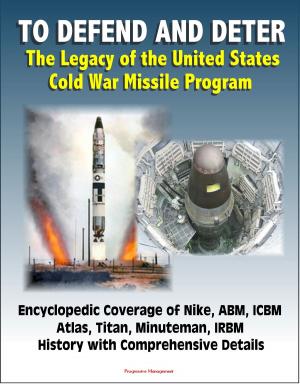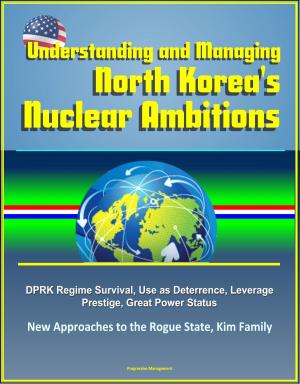21st Century U.S. Military Manuals: Joint Force Land Component Commander Handbook (JFLCC) - Field Manual 3-31 - Command and Control (Professional Format Series)
Nonfiction, History, Military, United States| Author: | Progressive Management | ISBN: | 9781301926206 |
| Publisher: | Progressive Management | Publication: | November 28, 2012 |
| Imprint: | Smashwords Edition | Language: | English |
| Author: | Progressive Management |
| ISBN: | 9781301926206 |
| Publisher: | Progressive Management |
| Publication: | November 28, 2012 |
| Imprint: | Smashwords Edition |
| Language: | English |
Professionally converted for accurate flowing-text e-book format reproduction, this Army Field Manual provides guidance for planning and conducting land operations requiring the close coordination of Army forces and Marine Corps forces under the control of a joint force land component commander within a joint operations area. It presents considerations and options that joint force commanders can employ when designating a joint force land component commander and describes the authority and responsibilities of a joint force land component commander.
This handbook describes guidance for establishing the command relationship based on the joint force commander's concept of operations. It addresses formation, functions, and organization of the joint force land component commander. It also discusses the operational questions of who, what, when, and how of operations in support of major operations or campaigns by a joint force commander. It is not the intent of this handbook to supplant approved joint doctrine; nor is it the intent to restrict the authority of the joint force commander from organizing the force and executing the mission in a manner he deems most appropriate to ensure unity of effort in the accomplishment of the overall mission.
Chapter I * Authority and Functions of Joint Force Land Component Commander * Scope * Purpose * Role and Authority of the Combatant Commander * Functions of the Combatant Commands * Authority over Subordinate Commanders * Functional Component Command Authority * Command Relationships * Chapter II * Command, Control, and Command Relationships * Command Relationships * JFLC Command Relationships * Command Relationships with the JFC * Command Relationships with Functional Components * Functional Component Support Relationships * Command Relationships with Service Components * Liaison * Planning * Process * Communications * Chapter III * Responsibilities, Roles, and Functions * JFLCC Responsibilities and Roles * JFLCC Functions * Multinational Considerations * Chapter IV * Considerations for Forming a JFLC Command * Establishing Authority * Defining the Area of Operations * Organizing * Employing * Timing * Forming the Staff * Forming the Command Element * Sourcing the Forces * Liaison, Board, and Cell Requirements * Appendix A * Intelligence * General * Offices, Centers, and Teams * Appendix B * Movement and Maneuver * General * Key Considerations * Appendix C * Administration and Logistics * General * Directive Authority for Logistics * Common User Logistics * Logistics Planning * Boards and Centers * Functions of the J-1 and J-4 * Appendix D * Firepower * General * Fires Mission * Resources * Targeting * Joint Targeting Process Functions and Responsibilities * Fires Synchronization and Coordination * Targeting Coordination Board * Component Target Coordination Responsibilities * Air Tasking Order * Effects Assessment * Appendix E * Force Protection * General * Theater Air and Missile Defense * Nuclear, Biological, and Chemical Defense * Antiterrorism Measures * Defensive Information Operations * Physical Security Measures * Operations Security Measures * Planning * Appendix F * Notional Headquarters Organization * General * Staff * Staff Responsibilities * Appendix G * Multinational Considerations * General * Land Component Command Headquarters and Staff * Command Focus * Coordination and Control * Standardize Procedures * Intelligence Collection and Dissemination * Communications * Integration of Capabilities * Rules of Engagement * Logistics * Appendix H * Operational Tasks * General * Scope * Core Tasks/Functions * Glossary
As a bonus, this reproduction includes the complete 2012 Army Leadership manual (FM 6-22), which describes the Army's view of leadership, outlines the levels of leadership (direct, organizational, and strategic), and describes the attributes and core leader competencies across all levels.
Professionally converted for accurate flowing-text e-book format reproduction, this Army Field Manual provides guidance for planning and conducting land operations requiring the close coordination of Army forces and Marine Corps forces under the control of a joint force land component commander within a joint operations area. It presents considerations and options that joint force commanders can employ when designating a joint force land component commander and describes the authority and responsibilities of a joint force land component commander.
This handbook describes guidance for establishing the command relationship based on the joint force commander's concept of operations. It addresses formation, functions, and organization of the joint force land component commander. It also discusses the operational questions of who, what, when, and how of operations in support of major operations or campaigns by a joint force commander. It is not the intent of this handbook to supplant approved joint doctrine; nor is it the intent to restrict the authority of the joint force commander from organizing the force and executing the mission in a manner he deems most appropriate to ensure unity of effort in the accomplishment of the overall mission.
Chapter I * Authority and Functions of Joint Force Land Component Commander * Scope * Purpose * Role and Authority of the Combatant Commander * Functions of the Combatant Commands * Authority over Subordinate Commanders * Functional Component Command Authority * Command Relationships * Chapter II * Command, Control, and Command Relationships * Command Relationships * JFLC Command Relationships * Command Relationships with the JFC * Command Relationships with Functional Components * Functional Component Support Relationships * Command Relationships with Service Components * Liaison * Planning * Process * Communications * Chapter III * Responsibilities, Roles, and Functions * JFLCC Responsibilities and Roles * JFLCC Functions * Multinational Considerations * Chapter IV * Considerations for Forming a JFLC Command * Establishing Authority * Defining the Area of Operations * Organizing * Employing * Timing * Forming the Staff * Forming the Command Element * Sourcing the Forces * Liaison, Board, and Cell Requirements * Appendix A * Intelligence * General * Offices, Centers, and Teams * Appendix B * Movement and Maneuver * General * Key Considerations * Appendix C * Administration and Logistics * General * Directive Authority for Logistics * Common User Logistics * Logistics Planning * Boards and Centers * Functions of the J-1 and J-4 * Appendix D * Firepower * General * Fires Mission * Resources * Targeting * Joint Targeting Process Functions and Responsibilities * Fires Synchronization and Coordination * Targeting Coordination Board * Component Target Coordination Responsibilities * Air Tasking Order * Effects Assessment * Appendix E * Force Protection * General * Theater Air and Missile Defense * Nuclear, Biological, and Chemical Defense * Antiterrorism Measures * Defensive Information Operations * Physical Security Measures * Operations Security Measures * Planning * Appendix F * Notional Headquarters Organization * General * Staff * Staff Responsibilities * Appendix G * Multinational Considerations * General * Land Component Command Headquarters and Staff * Command Focus * Coordination and Control * Standardize Procedures * Intelligence Collection and Dissemination * Communications * Integration of Capabilities * Rules of Engagement * Logistics * Appendix H * Operational Tasks * General * Scope * Core Tasks/Functions * Glossary
As a bonus, this reproduction includes the complete 2012 Army Leadership manual (FM 6-22), which describes the Army's view of leadership, outlines the levels of leadership (direct, organizational, and strategic), and describes the attributes and core leader competencies across all levels.
